Engaging students in STEM (Science, Technology, Engineering, and Mathematics) subjects doesn’t always require elaborate preparations or expensive materials.
In fact, there are numerous “no prep stem activities & games that can ignite curiosity, foster critical thinking, and promote hands-on learning with minimal fuss.
These activities often leverage everyday materials and readily available resources, making them accessible for educators and parents alike.
Whether you’re a teacher looking for spontaneous classroom engagement or a parent seeking fun and educational ways to occupy your child’s time, these no prep STEM activities and games are sure to inspire a love for science and learning in young minds.
Paper Tower Challenge:
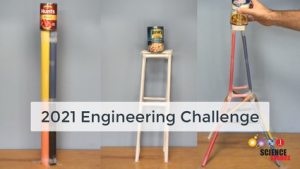
All you need for this fun and educational STEM activity is a stack of plain paper and a roll of tape. Challenge your students or children to build the tallest freestanding tower using only paper and tape. Encourage them to experiment with different shapes and structures, fostering critical thinking and problem-solving skills as they discover the principles of stability and balance. This activity not only promotes creativity but also introduces concepts of engineering and physics in a hands-on and engaging way.
Nature Scavenger Hunt:
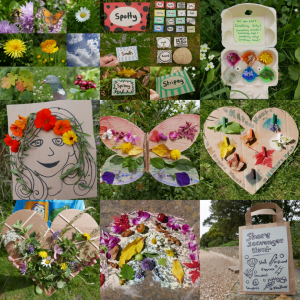
Take your STEM exploration outdoors with a nature scavenger hunt. This activity requires no preparation other than a list of items commonly found in nature, such as leaves, rocks, flowers, or insects. Give participants a list and ask them to find and identify as many items as they can. This activity not only connects children with the natural world but also encourages observation skills, classification, and basic scientific inquiry. It’s a fantastic way to introduce biology and ecology concepts while enjoying the great outdoors.
Balloon Rocket Experiment:
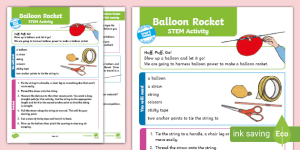
Harness the power of air pressure with a simple balloon rocket experiment. All you need are balloons, string, and a straw. Thread the string through the straw, secure it between two points (e.g., chairs), and tape a blown-up balloon to the straw. When you release the air from the balloon, it propels the straw forward along the string. This activity demonstrates Newton’s third law of motion and introduces basic concepts of physics and engineering in a playful and hands-on manner.
Related: 20 Easy Stem Activities for Preschoolers
Shape Exploration with Household Objects:
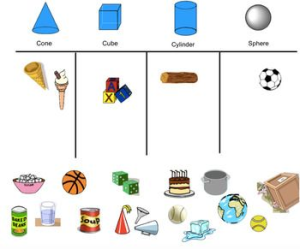
Gather a variety of household objects like cans, boxes, and containers of different shapes and sizes. Challenge your students or children to sort and categorize these objects based on their shapes, encouraging them to identify and discuss the characteristics of each shape. This activity not only helps with shape recognition but also lays the foundation for geometry concepts. As a bonus, you can also explore concepts like volume and capacity by filling and comparing these objects with water or small objects.
Kitchen Chemistry:
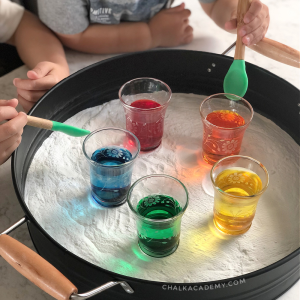
Bring chemistry into the kitchen with simple experiments using ingredients you likely already have on hand, such as baking soda, vinegar, and food coloring. For instance, mixing baking soda and vinegar creates a fizzy reaction that introduces the concept of chemical reactions and the release of gases. Add food coloring for a visual twist. This no-prep STEM activity not only makes learning chemistry accessible but also sparks excitement in young scientists as they witness surprising reactions right at home.
Shadow Science:
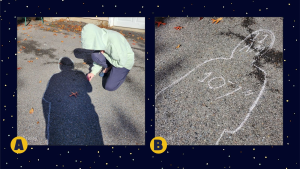
Harness the power of sunlight to engage in some impromptu shadow science. All you need is a sunny day and various objects of different shapes and sizes. Place these objects on a piece of paper or a white surface and observe the shadows they cast as the sun moves. Encourage kids to note how shadow sizes and shapes change throughout the day and discuss the reasons behind these changes. This activity introduces concepts of light and shadows, as well as Earth’s rotation, in a captivating and easy-to-grasp manner.
LEGO Engineering Challenge:
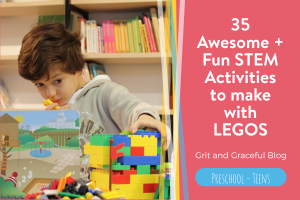
Most households or classrooms have a stash of LEGO bricks, making this a no-prep STEM activity that’s both fun and educational. Challenge participants to build specific structures, like bridges, towers, or vehicles, using only their imagination and available LEGO pieces. This exercise not only encourages creativity but also teaches engineering principles such as stability, balance, and structural integrity.
Math Puzzles with Playing Cards:
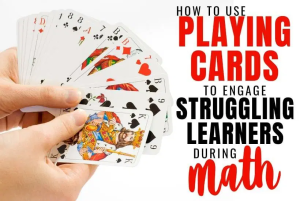
A deck of playing cards can be a versatile tool for spontaneous math learning. Shuffle the cards and draw a few at random. Create math challenges based on the numbers or suits drawn, such as addition, subtraction, multiplication, or fractions. For example, you can add the values of two cards or multiply the values of two cards. This activity sharpens math skills and encourages quick mental calculations, making it a convenient no-prep option for reinforcing mathematical concepts.
Related: 20 Easy Stem Activities With Paper
DIY Weather Station:
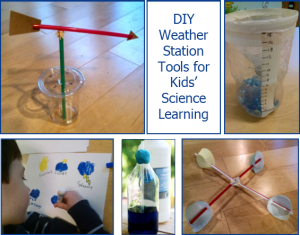
Engage in real-world science by creating a simple DIY weather station. All you need are basic materials like a thermometer, a rain gauge (a jar or container can suffice), and a windsock (you can make one from a plastic bag). Place these instruments in a suitable location, and encourage kids to monitor and record daily weather conditions, including temperature, precipitation, and wind direction. This activity introduces children to meteorology and data collection, fostering an interest in Earth sciences.
Magnetic Exploration:
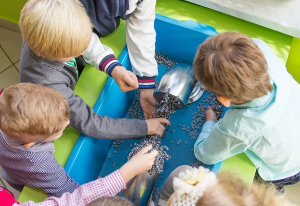
Explore the fascinating world of magnets with a magnetic scavenger hunt. Gather common objects and challenge participants to determine whether they are attracted to magnets or not. This activity helps children understand magnetic properties and the concept of magnetic fields. You can also experiment with different types of magnets, such as neodymium magnets and refrigerator magnets, to observe variations in magnetic strength.
Stomp Rocket Launch:
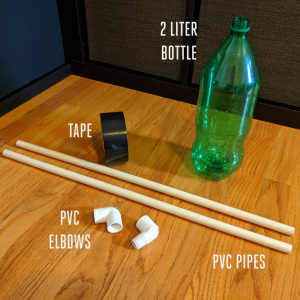
Create a simple stomp rocket using a plastic bottle, a paper or plastic cone, and some tape. Attach the cone to the mouth of the bottle, add a paper rocket (rolled up and secured with tape), and step on the bottle to launch the rocket into the air. This activity introduces basic principles of physics, such as air pressure and motion, and provides a fun way to explore engineering concepts like aerodynamics.
Nature Journaling:
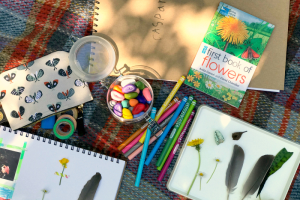
Encourage kids to connect with nature and practice scientific observation by starting a nature journal. All you need are blank notebooks or sheets of paper and some colored pencils or markers. Go on nature walks or explore your backyard, and have children sketch and describe what they observe. This activity promotes awareness of biodiversity, encourages curiosity about the natural world, and nurtures artistic and scientific skills.
Storytelling with Math:
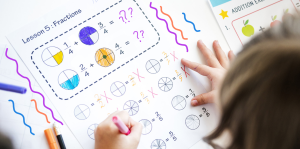
Combine math and creativity by having children create their own math stories. Provide them with a set of numbers and mathematical operations (addition, subtraction, multiplication, division) and ask them to weave these elements into a captivating story. This exercise not only reinforces math skills but also stimulates imagination and narrative abilities.
Mystery Bag Science:

Gather a collection of everyday objects and place them in a bag or box. Without revealing the contents, have children reach into the bag, feel the objects, and describe their characteristics (e.g., texture, shape, size). Encourage them to make hypotheses about what each object might be based on their observations. Afterward, reveal the objects and discuss the accuracy of their predictions. This activity enhances observation skills, deductive reasoning, and the scientific method.
Straw Engineering Challenge:
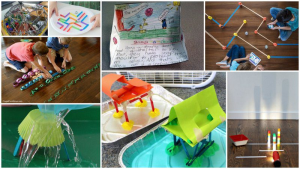
Challenge children to construct various structures using plastic drinking straws and tape. Provide them with simple building challenges, such as building the tallest tower, the strongest bridge, or a structure that can withstand an “earthquake” (shaking the table). This activity encourages creativity, problem-solving, and an understanding of basic engineering principles like stability and load-bearing.
Solar Oven Cooking:
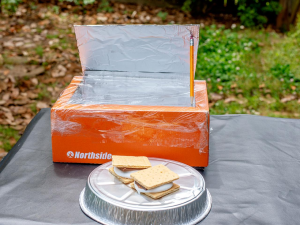
Harness the power of the sun to cook food with a DIY solar oven. All you need is a cardboard box, aluminum foil, plastic wrap, and a sunny day. Line the inside of the box with aluminum foil, leaving a clear plastic window on top (a cut-out flap covered with plastic wrap works). Place your food item inside on a plate and position the box in direct sunlight. Over time, the solar oven will heat up, demonstrating the principles of solar energy and heat transfer. This activity not only introduces solar power concepts but also combines science with a tasty treat.
Math in the Real World:
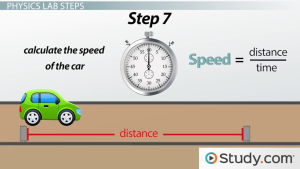
Take a walk or go on a car ride and challenge children to spot and calculate real-world math problems. Ask them to add or subtract the numbers on license plates, calculate the total cost of items at a store, or figure out distances and travel times on road signs. This activity encourages practical application of math skills in everyday scenarios, making math more relatable and engaging.
Sink or Float Challenge:
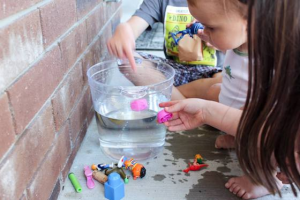
Gather a variety of small objects from around the house and create a “sink or float” challenge. Have kids predict whether each object will sink or float in a container of water and then test their predictions. This simple activity introduces concepts of buoyancy, density, and the scientific method while sparking curiosity about the properties of different materials.
DIY Windsock:

Create colorful windsocks using materials like paper, markers, and string. Allow children to decorate the paper with their designs, and then roll it into a cylinder shape. Attach strings to both ends of the cylinder, and your windsock is ready to go. Hang it outside and observe how it moves with the wind. This activity not only engages kids in a creative art project but also introduces them to meteorology and wind patterns.
Coding with Unplugged Activities:

Teach the basics of coding and computational thinking without the need for a computer. Use simple commands and movements (e.g., forward, backward, turn left, turn right) to guide children through an obstacle course or a maze drawn on paper. Alternatively, have them “program” a friend to complete a series of actions, introducing the concept of algorithmic thinking. These unplugged coding activities help build a foundation for understanding computer programming principles.
Related: 100 Free Lesson Plan Ideas for Preschool (Printable PDFs)

